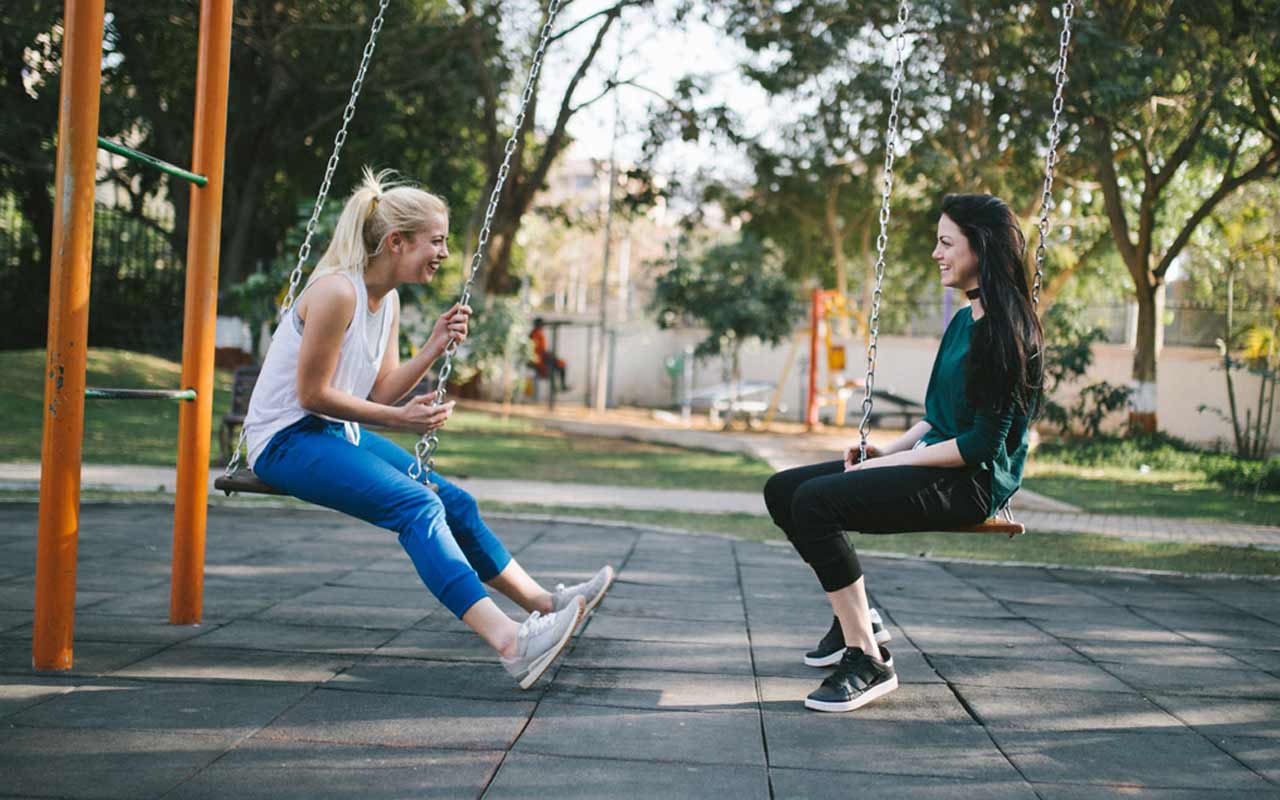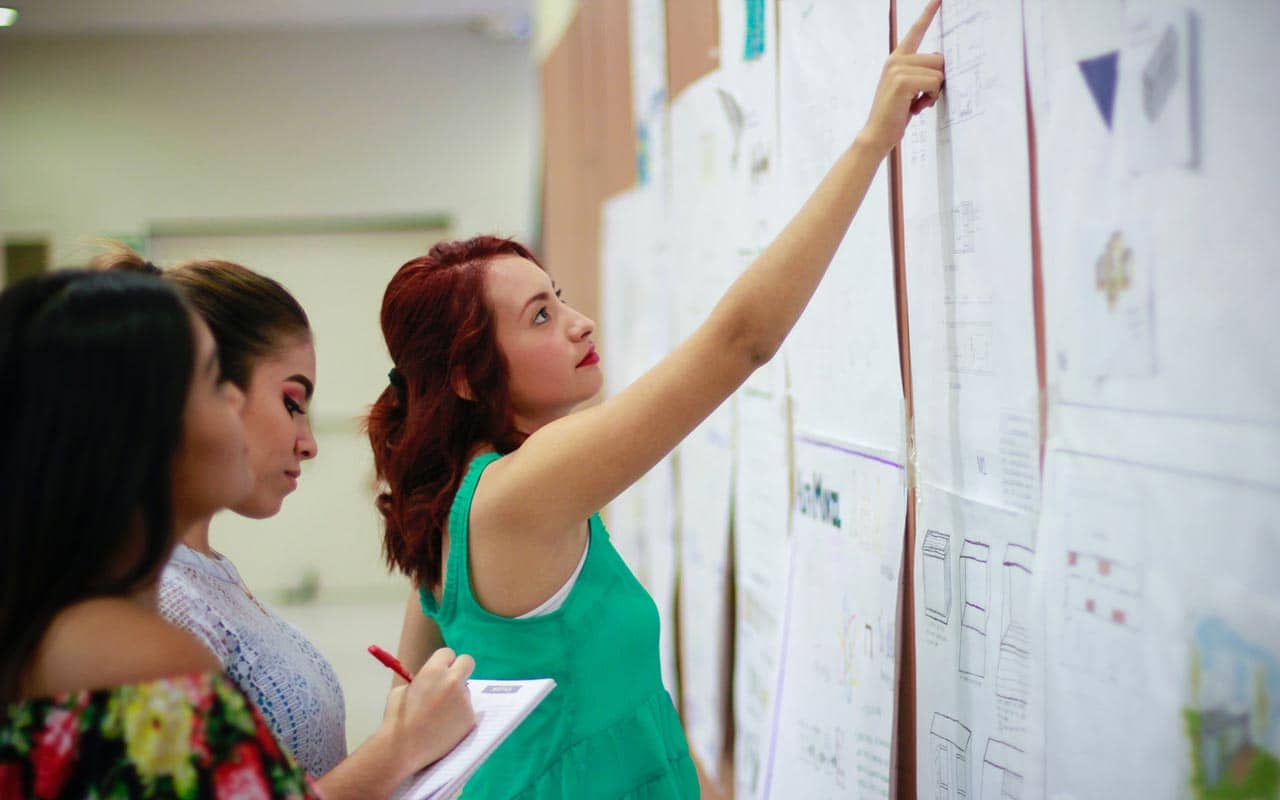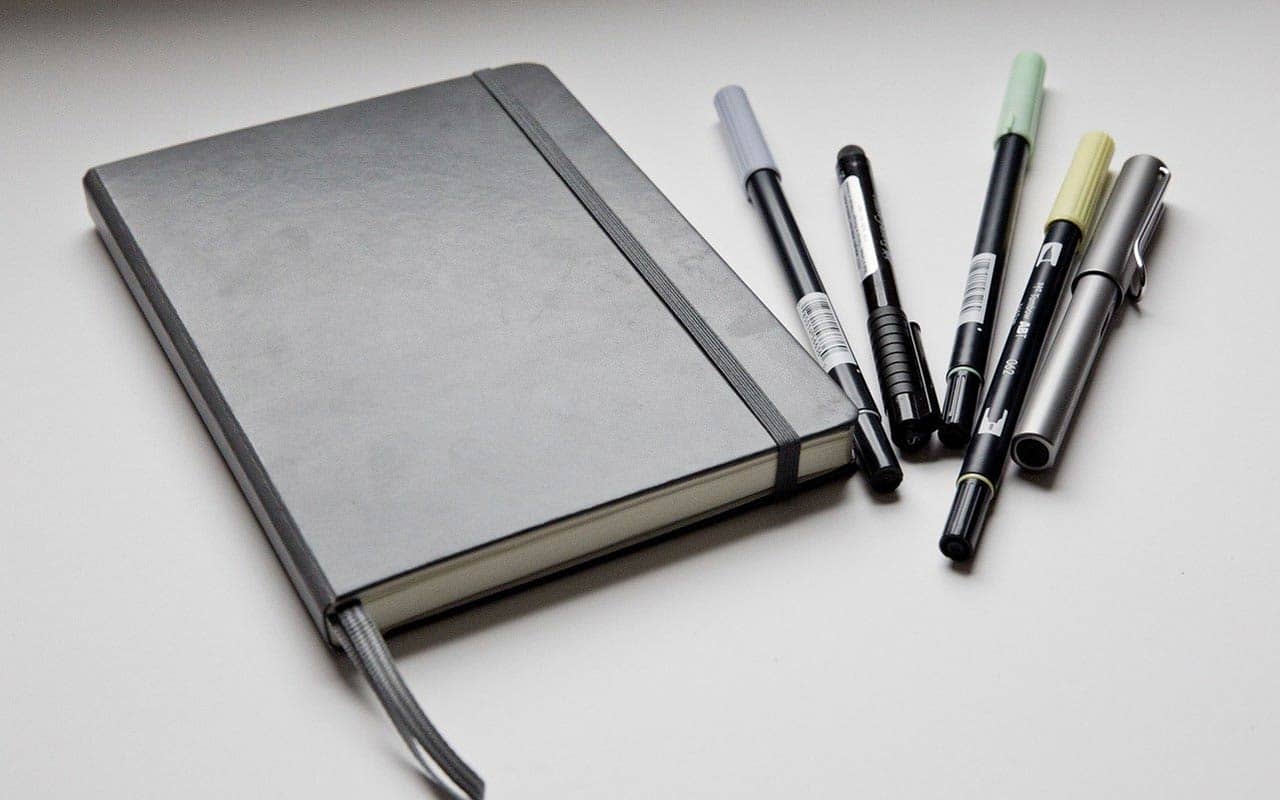 If you could fluently speak any language in the world, what would it be? Maybe you have more than one you’d like to learn.
If you could fluently speak any language in the world, what would it be? Maybe you have more than one you’d like to learn.
Since you’re here, chances are Spanish tops your list. And that’s not surprising since Spanish is the second-most spoken language globally, just behind Mandarin Chinese.
In fact, according to Ethnologue (2019, 22nd edition), there are 480 million Spanish speakers across the globe who make up 5.9% of the world’s population.
But maybe something is holding you back.
Learning a language is hard. It takes a lot of time… and a lot of repetition.
What if that wasn’t true? What if you had a simple way to learn vocabulary, numbers, and phrases? And what if you could do it all in under an hour a day (with minimal repetition)?
And the best part? Even if you take breaks, you can still make progress.
It might sound too good to be true but stick with me. Everything you’ll learn today is not only the best way to learn Spanish — it’s also the most scientific.
Ready to learn Spanish in record time?
Here’s what this post will cover:
How to Learn Spanish in 12 Simple Steps
Since language learning can feel overwhelming, let’s break down the process into simple steps you can follow each day on your journey to become fluent.
1. Start Speaking Right Away
I turn to two people any time I need to learn a new language — my friends Olly Richards and Benny Lewis are two great resources for anyone looking for language learning help.

Olly believes it’s important to choose no more than one textbook, video course, audio program, or teacher at a time.
And two of Benny’s biggest rules are 1) speak from day one, and 2) create language learning missions.
It’s easy to get overwhelmed if you don’t have a plan. You run the risk of doing too much at once and failing because you don’t have a clear vision for where you’re headed (and how you’ll get there).
But by following their simple principles, you can avoid overwhelm and gain traction right away.
How does one “start speaking immediately” if they’re learning Spanish for beginners? Once you have the best possible materials, you can:
- Read out loud,
- Repeat what you hear from recordings, and
- Talk with a native speaker.
Speaking of the best materials, let’s take a look at a few recommendations.
2. The Best Materials to Help You Learn to Speak Spanish
There’s a problem inherent with calling something “the best” because it can cause an endless delay as you try to figure out the perfect learning material for you.
So what are the best materials? Ones that provide the easiest way to learn Spanish — the ones you will actually use!
You’ll need to do a bit of research and self-exploration. No one else can tell you exactly what will work for you, and sometimes you have to experiment to find the best materials.
But you don’t want to get caught in the endless loop of looking for “the best,” so let’s look at how you might go about choosing the best books, video and audio programs, and teachers.
Finding the Best Books to Teach Yourself Spanish
Do you already read or speak another foreign language? If so, you can choose a book in that language — this will allow you to practice “laddering.”
Laddering is a technique polyglots use to do maintenance work on one language while adding in a new language.
If you aren’t there yet, you can look for a book that contains:
- A list of the most commonly used vocabulary words
- Links or downloads to audio or video resources
- Short lessons to help you achieve your goals
For example, if you’re not traveling, you can look for something focused on Spanish phrases used in daily life.
There are times where I’ve broken Olly’s “one book” rule and picked up two at a time — usually because the one I wanted didn’t include phrases. And if you also want to pick up a Spanish dictionary, that won’t count toward your one book.
If you’re stuck on which book to choose, take a look at Olly Richards’ recommendations for the best language learning books.
Learning Spanish with Video and Audio Programs
Go online, and you’ll pretty quickly figure out that the internet is packed with Spanish learning podcasts and videos. It’s great if you want to go this way but remember: focus on one and stick with it from beginning to end.
When you focus on a single program at a time, it helps your brain see the bigger picture. Complete one podcast or video program at a time, and then you can move on to choose another.
Note: the exception to this rule is if you get into a resource and figure out you just can’t stand the format. (But be sure to do your research ahead of time by reading reviews from other successful language learners.)
And if you want to compare and contrast the best language learning software, check out the post I wrote on the topic.
Any time I’ve learned a new language, I’ve made better progress by not constantly interrupting my learning with new courses and resources. Olly’s advice sticks with me: Pick one, and stick to it.
Choosing a Teacher to Help You Learn Spanish
While finding (good) books and courses can take some time, it can be just as essential to find a trustworthy language teacher to help you learn.
One of my favorite sources of teachers who offer 1-on-1 Spanish lessons is italki. At the time of this article’s publication, they have over ten thousand teachers in “any language” and over 1700 of them specifically teach Spanish.
You can also find speaking partners on the site for free.
But I recommend hiring someone to help you with learning Spanish. Why?
Any time you use a “tandem” language learning service, you don’t really share time with a native speaker. In reality, you usually end up competing for time.
In my personal experience, I spent dozens of hours trying to trade my time with people who kept switching back to English because they (naturally) wanted as much time speaking it as they could get.
In comparison, a teacher is 100% focused on you and your learning goals. But remember: it’s your responsibility to make sure you’ve clearly communicated those goals.
The only real way to determine if a Spanish teacher is any good is to try holding sessions with them. Aim for at least a weekly session over a 90-day period.
Now you know what to look for in your language learning books, courses, and teachers, let’s take a look at how your senses can help you learn to speak Spanish.
3. Incorporate The Big 5 of Language Learning
There’s a model of memory recall that’s referred to as the Levels of Processing effect. The “Big Five” is my fancy name for that effect, which tells us we can learn more quickly by tapping into more of our senses.
The five I use the most for helping me learn Spanish are:
- Reading,
- Writing,
- Speaking,
- Listening, and
- Memorization.
To help you learn more about the Big 5, I recorded this video:
I recommend trying to do at least 15 or 20 minutes a day as you learn to speak Spanish. While it might seem like a lot to squeeze in every day, there are many ways to incorporate the Big 5 into your daily routine, including using certain apps with your teacher.
For example, the Beelinguapp shows you “the exact same text in two languages; side by side.” The app has some decent short stories and includes a karaoke reading feature where you can listen to native speakers narrate the story as you follow along.
We’ll talk more about the Big 5 as this post continues (especially memorization). But before we get there, let’s look at what a mission is and how to create one to help you learn Spanish.
4. Create Missions for Learning Spanish
Back in the first step of this post (start speaking right away), I mentioned Benny Lewis and his recommendation to create language learning “missions.”
In the early days, Benny set missions for himself that included learning and speaking as much of the language of a country he was visiting as quickly as he could. Later, he transitioned to learning a new language while living in a country that spoke a different language.
Similarly, you can create a “learn to speak Spanish” mission for yourself.
But how do you create a mission that’s specific enough to be helpful?
Use the Power of Limits
Let’s look at how you can harness the power of limits while learning Spanish. It’s an important step, and the best way to accomplish it is to do some self-analysis to determine what you want to say in Spanish.

For example, if you are planning to travel to the Spanish city of Valencia for the Falles Festival, you might imagine a list of topics you would need to know.
Since the festival is celebrated on the feast night of Saint Joseph (patron saint of carpenters) and celebrated by the burning of waste wood from local woodworkers’ workshops, you might learn vocabulary and phrases about fire, carpentry, and festivals as well as your traditional travel lexicon.
But maybe you will meet a new friend who is a photographer while you’re there — there would be no way to know in advance that you would want to talk about photography in Spanish.
Instead, your main mission would be to get through a portion of your language learning books and meet with a teacher two or three times a week before you left.
Here is what your initial missions could look like:
- Mission One — gather your books and focus on the power of limits
- Mission Two — schedule time on your calendar to study your learning materials
- Mission Three — schedule time to meet with your teachers; ideally, book out as many weekly sessions as you can once you find the teacher for you
- Mission Four — keep following the program laid out by your learning materials, but also start to identify any gaps in the material you would like to learn
- Mission Five — identify themes related to your interests
- Etc
You can create many other missions for yourself, so don’t limit your missions to just the ones here.
Before we wrap up this topic, let’s focus on Mission 5 for a moment.
It can be beneficial to find topics you’re interested in and then begin to translate them into your mother tongue, according to my friend Luca Lampariello.
Since I love learning about Memory, I might choose a book written in Spanish that covers memory topics. As I translated it, I would be exposed to Spanish vocabulary and grammar, and generally begin to understand how the language works.
Combine Your Missions (and Record Them)
Now that you know what your missions look like, you can start to combine them with your learning Spanish.
Here’s a pro tip as you’re getting started: I record every session I have with a language teacher.
Why? Because then I don’t have to worry about “losing” anything I learn during the session, and I can be fully present with the teacher. No matter what words or phrases we cover during the session, I can always go back and listen again.
My favorite software for recording sessions is called Screenflow. It lets me have the textbook and any other learning materials on the screen and my teacher on video conference. I can go back later and make notes or put words and phrases into a Spanish Memory Palace.
To organize the words and phrases you learn, you can:
- Write them down in your notebook or virtual notes,
- Draw (or otherwise place) them on index cards, and/or
- Memorize them directly
Next, let’s look at how mnemonic devices can help you teach yourself Spanish.
5. How to Learn Spanish Using Mnemonics
If you want to know the easiest way to learn Spanish, mnemonics are a good bet. There’s nothing new about this — in fact, mnemonics (also called memoria technica) have been used since the time of ancient Greek philosophers.
You can use a number of mnemonic strategies for learning Spanish:
- Recall Rehearsal
- Magnetic Imagery (also known as Elaborative Encoding)
- And my favorite — the Memory Palace
Using a Memory Palace to learn Spanish involves placing unusual images along a journey you then mentally recreate.
For example, you could choose to use your current home to create a Memory Palace. You would then place magnetic imagery in specific stations throughout the house. Here’s a mnemonic example for those just learning Spanish:

Establishing long term memory:
With practice, you can turn any familiar home or building into a Memory Palace. Then your next step is to use the Memory Palace for recall rehearsal. This is how you reduce the amount of repetition that usually goes into learning Spanish.
The Memory Palace allows you to harness the primacy, recency, serial positioning, and Von Restorff effects.
Having a vigorous Memory Palace training routine will help you get to the point where you can memorize entire phrases and sentences of Spanish within seconds.
Want to learn more about how to harness the power of Memory Palaces in your Spanish language learning? The Memory Palace Mastery training goes into more detail:
To make organizing your words and phrases for placement into your Memory Palace easier, memorize exactly what you are learning from your chosen book and program. Along those lines, when you record the sessions with your Spanish teacher, you can also add that information into memory.
Plus, because you’re working from a very clear mission, you’ll proceed much faster than you would with a course or book on its own.
Next, let’s look at how visual components like mind mapping and drawing can help you learn to speak Spanish.
6. Learn Spanish Through Drawing & Mind Mapping
When you think about language learning, your mind probably focuses on learning’s written and spoken aspects. But did you know that drawing can help you learn, too?
Think about it. When you’re learning Spanish, your brain has to handle a lot of new information:
- Vocabulary words,
- Phrases,
- Pronunciation,
- Grammar,
- Etc
Instead of relying solely on memory to help you remember, you can make things easier using the power of magnetic imagery.
Let’s look at two approaches.
Learning Spanish Through Drawing
Sometimes you might not feel like using mnemonics right away — I often don’t. That’s where drawing comes in.
You can then transport the image into your Memory Palace, including other words to help with Recall Rehearsal.
But it’s not just simple illustrations that can be helpful.
Mind Mapping to Learn Spanish Vocabulary
You can also use mind mapping to help you learn to speak Spanish. I mostly use this process to help me remember more complicated phrases — or simply create more variety as I learn.
The mind map helps me stack on additional mnemonics and remember more information about the vocabulary and phrases I’m focused on. And while this method takes more time in the beginning, it gets faster with practice.
You can also watch this video I made about how to learn Spanish vocabulary faster:
As much as it would be great if learning a new language was consistent and straightforward, there will be some bumps in the road. Let’s look at what to do when you hit them.
7. Balance the Spanish Learning Challenge-Frustration Curve
As you make progress with learning Spanish, some things will start to get more comfortable. When that happens, you might be tempted to keep doing those things. But the truth is, you won’t get much benefit from repeating things that are no longer challenging.
On the flip side, don’t get so ambitious that you skip ahead and get overwhelmed or frustrated. That usually leads to giving up or setting your learning aside for long periods.
There is no perfect example of the best way to learn Spanish because everyone’s journey looks a little different.
But let’s say you’re very comfortable about discussing the weather and your favorite foods. You could level up by turning your focus to phrases about current events.
Any time you find a new task too challenging, give yourself a quick break and scale back. Go back to talking about things that are easy, and see where you can sprinkle in a few new words that will help you have those world events conversations.
Next, there’s nothing like conversing with someone who has spoken Spanish for years.
8. Meet with Native Spanish Speakers as Much as Possible
The Internet is great when it comes to learning Spanish… to a point. Yes, you can meet native Spanish speakers and teachers from around the world — but you won’t get the benefit of proxemics.
Proxemics is seeing the full range of gestures as someone speaks and hearing the full spectrum of sounds, unchanged by technology.
One way to maximize your time with a native Spanish speaker is to sit across a table with them and discuss the pictures in a magazine. Even if you’re just getting started, you should still know some phrases like, “What is this?”
Your first conversation doesn’t have to be fancy. Just sit with them and keep asking the question. Listen to what they say and repeat it. Do this as often as possible.
If you don’t have in-person access to a native speaker, you can also do a version of this online. Bring scans from magazines with you to your language learning lessons and ask your teacher to do the exercise with you.
If you don’t have access to native speakers, what else can you do?
9. Learn Spanish Online (One Resource at a Time)
Once you’ve started your Spanish learning journey, the temptation to sign up for more and different courses will always be there.
Eventually – once you’ve fully completed the first course you chose – you should begin to add new resources. Ideally, you’ll start with courses that use the same learning techniques so you’re not learning too much new information at a time.
And be sure to complete each new course from beginning to end — you can help yourself stick to this goal by scheduling out your study sessions.
Some of my favorite online Spanish courses are:
- Pimsleur Spanish (there are Latin American and Castilian versions)
Here’s more about how you can combine Pimsleur courses with memory techniques:
I also love learning from teachers on Instagram. Here are a few that come highly recommended:
When you follow Spanish teachers on Instagram, it’s fun and easy to read and hear Spanish every day.
But that doesn’t mean you can skip the important steps of writing out what you learn, speaking it yourself, and memorizing what you learn using the Big Five.
Learning Spanish takes both input and output to make the most of your time.
This next step is optional but can be an excellent choice for some learners.
10. Take a Formal Spanish Class (Optional)
Attending a formal in-person (or online or hybrid) Spanish class might be just what you need to help you become fluent in Spanish.
What I’ve loved the most about the in-person language classes I’ve attended is this:
- The small class size
- English was a last resort for the teacher
- It was much easier to stick to a single textbook
- I could use the class itself as a Memory Palace
By taking a formal language course, I was able to accelerate my language learning capabilities. I’ll admit — I’m glad I studied on my own in the beginning and waited to take the course until later.
Whether or not you take a class or have someone else to speak with, there’s always someone you can converse with.
11. Learn to Speak Spanish… By Talking to Yourself
One way to teach yourself Spanish is to develop the habit of “self-talk” — where you speak to yourself in the language.
For example, plan your day in Spanish. While you’re planning, you may discover vocabulary words you don’t know yet, like the dry cleaner’s (la tintorería) or milk, bread, and eggs (la leche, el pan, y huevos). You can add those new vocabulary words as a mini-mission.
In the beginning, this will be a small habit. But do it anyway using the words you already know. Why? Because it’s a form of active recall that will help you keep track of where you need to improve.
When you talk to yourself in Spanish, you get a chance to do self-analysis that will also help you create better Spanish learning missions.
Finally, give yourself a break. Literally.
12. Take Strategic Breaks
It may sound counterintuitive, but it’s good to take breaks.
The first type of break is during your study times. Rather than cramming for hours at a time without stopping, you might absorb more when you work in 15-minute bursts or use the Pomodoro technique.
Explore different styles of breaks (and journal about what you observe). This will allow you to learn from the trends you observe and make the most of them.
And it’s not just small breaks during your language learning sessions. It’s also important to take a week off occasionally. There’s no official pattern, but you could start by seeing what happens when you learn for five weeks and then take a week off.
And schedule your breaks so they’re not random or accidental. You don’t want to set a pattern of taking a break because something got hard or you get bored. Make sure you have a plan to get back on the horse if you do happen to fall off.
When you take careful breaks, it allows your brain time to filter the information you’ve spent so much time absorbing. This time to filter is often called “diffuse thinking.”
Finally, there are some tips and tricks I have up my sleeve to help you learn to speak Spanish.
Power Tips (and Troubleshooting) for How to Learn Spanish
If you’re like most learners, you’ll have plenty of questions along the way.
One of the things I find most helpful in my language learning journeys is to try to answer my own questions as much as possible. I try to stay focused on getting as much input as possible while also speaking and writing in Spanish from memory.
Beyond that, there are questions I get asked all the time about learning Spanish:
How long will it take to learn Spanish?
My answer to most questions about “how long will it take to X, Y, or Z” is… it depends.
There’s usually no standard answer when it comes to language learning. If you take the mission creation portion of your education seriously, you should be able to have practical and straightforward conversations within a few months.
Remember: focus on fewer learning materials and go through them thoroughly before moving on. Then, when you base what you learn on your (carefully created) missions, you should be satisfied with your progress.
You should also think about what “fluency” means to you. Do a deep dive and decide on the definition you are pursuing — not what someone else thinks counts as fluent.
For me, fluency is simply “the ability to be understood and understand.”
Think about how well you speak in your mother tongue. People misunderstand and are misunderstood all the time. But the difference is when you’re fluent, you can give or receive clarification and better understand each other.

Should I travel to learn Spanish?
If you’re talking about short-term travel, it’s not a great way to learn the language.
Polyglots agree that you’ll be so focused on sightseeing and enjoying yourself that you won’t learn much. Plus, most native speakers you’ll meet are just regular people, not language teachers.
Sometimes you’ll meet interesting people and learn something from them, but it’s not a strategy that’s guaranteed to bring results. If you’re interested in completing the kind of missions we’ve discussed today, skip the travel and focus on the tips in this post.
What time of day should I study Spanish?
This question comes back to you and your learning habits: do you generally learn better in the mornings, afternoons, or evenings? Take some time to really think about the answer to this question — and then apply it to your Spanish learning.
Personally, I’m a morning person. I love to keep the books I’m studying next to my bed. This allows me to get a big chunk of learning done first thing in the morning.
This is another great reason to have your learning materials in physical form — that way, they don’t get lost in digital folders and phone apps.
Where can I learn Spanish near me?
Google is your friend when you want to find resources nearby. I recommend using the following search term to start:
intitle: “Spanish class” + name of your city or location
By narrowing your search that way, you’re likely to get more relevant search results.
You can also search for language learning groups on Meetup and watch for flyers posted in coffee shops and grocery store bulletin boards. I see adverts for language learning tutors near me all the time.
How can I learn Spanish by myself?
Go back to the beginning of this post and start with step one! When you choose the right materials and create Spanish learning missions for yourself, you’re more likely to successfully teach yourself Spanish.
When you follow the steps outlined in this post, skipping any that involve other people, you can still achieve your language learning goals. Sure, it might take a little bit longer. But with dedication, a strong plan, and a bit of stick-to-it-ness, you can learn Spanish on your own.
What about software for learning Spanish?
You’re in luck. I recently published a guide to the best language learning software programs.
But like most things, you’ll have to experiment to see which (if any) software works best for you. Be thorough in your search, and don’t let yourself get sucked in with easy wins that get you nowhere.
I won’t name names in this post, but a lot of software focuses on activity rather than accomplishment. You’ll feel great about the phrases you learn in the lessons… but will you actually remember them later or be able to use them in a conversation?
And if you’re using the free version of an app, beware of ads that interrupt your learning.
What movies should I watch to learn Spanish?
Watching movies can be a fun way to immerse yourself in learning Spanish. There are even Spanish language movies available for free on YouTube (and lots on Netflix).
When you’re deciding which movie to watch, here are a few questions to ask:
- In what country was the film produced? If you’re trying to learn Castilian Spanish, a movie made in Spain will be better than one from Latin America.
- How likely are you to encounter words and phrases that relate to your current missions, or will help you speak in the real world?
- Are there documentaries available related to the topics that are tied to your learning missions?
Documentaries are another great option to help you learn to speak Spanish. They can even help you find natural speech examples to help you accomplish your real-life missions.
So, are you ready to learn to speak Spanish?
How to Become Fluent in Spanish, This Year
There’s a lot to be said for being able to speak a second (or third) language.
So are you ready to rock your language learning journey? The easiest way to learn Spanish is to make a plan you’ll stick to.
And the key to learning most languages is simple: set some rules and practice consistently. If you follow the steps in this post and commit to your learning missions, you’ll be speaking Spanish in no time.
To help you learn Spanish using mnemonics and a Memory Palace, be sure to pick up your free copy of my memory improvement kit. Before you know it, you’ll be speaking Spanish like a native!
Related Posts
- Stoic Secrets For Using Memory Techniques With Language Learning
Christopher Huff shares his Stoic secrets for using memory techniques when learning a language. You'll…
- The German Professor Who Defends Memory Techniques for Language Learning
This professor defends memorization techniques for learning foreign languages and has the science to prove…
- The Most Controversial Language Learning Technique In The World
In this episode of the Magnetic Memory Method Podcast ... controversy about using mnemonics in…













